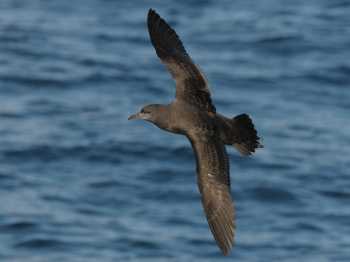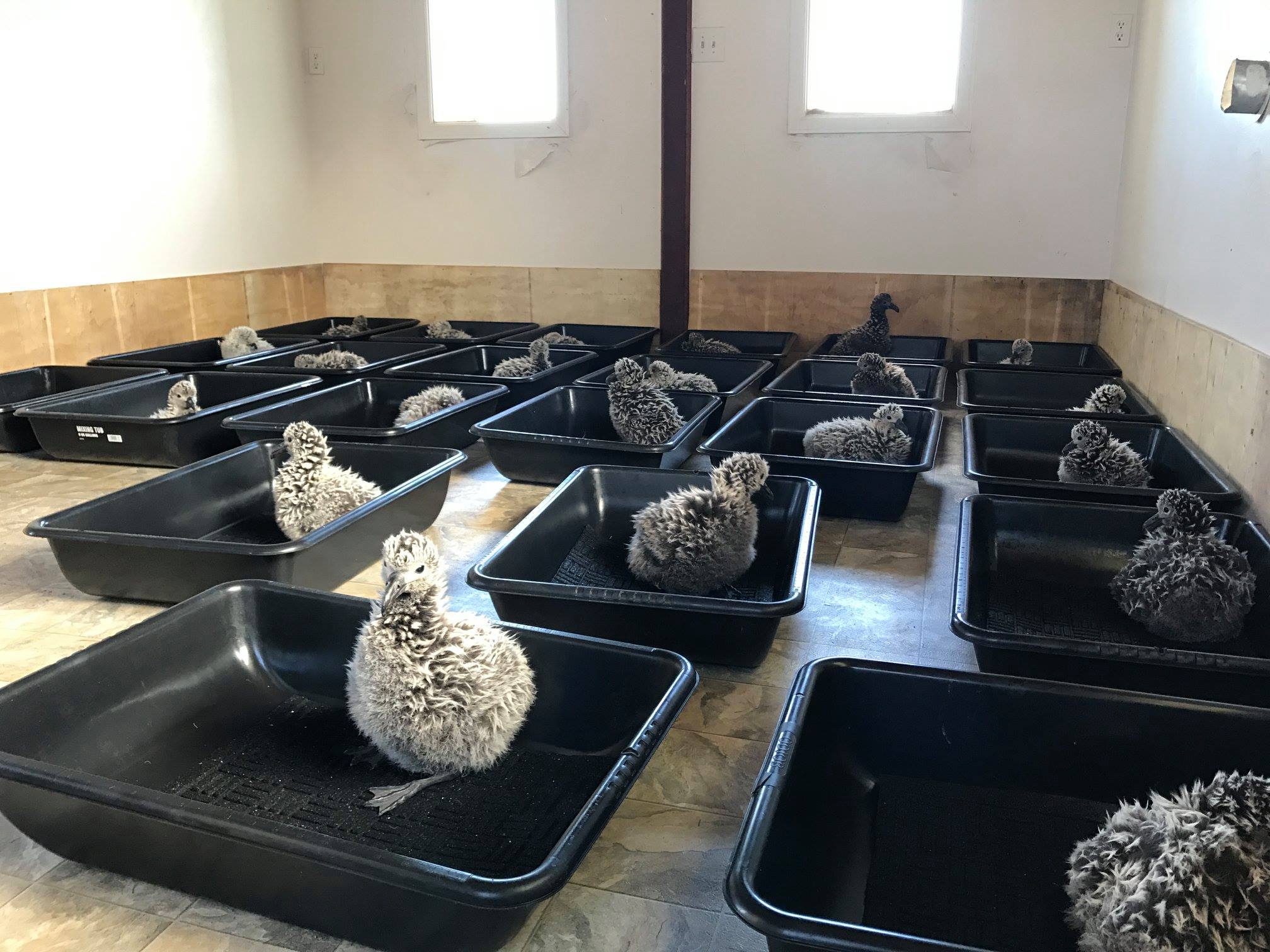Ewan Wakefield (Institute of Biodiversity, University of Glasgow, United Kingdom) and colleagues have published a grant report in the Seabird Group Newsletter (and on the grants page on the group’s website) on a study of the numbers and at-sea movements of globally Near Threatened Sooty Shearwaters Ardenna grisea at the Falkland Islands/Islas Malvinas*.
The authors report an estimate of “well in excess of 100,000 pairs” on Kidney Island, a population thought to be increasing in numbers. Birds tracked at sea from Kidney Island showed “the vast majority” foraged south of the island group in a region partly within an Argentinian Marine Protected Area (MPA).

Sooty Shearwater, photograph by John Graham
Reference:
Wakefield, E., Clark, T.J., Bonnet-Lebrun, A.-S., Campioni, L. & Catry, P. 2018. Seabird Group Grant Report – Surveying and tracking sooty shearwaters in the Falkland Islands. Seabird Group Newsletter 137: 8-9.
John Cooper, ACAP Information Officer, 27 February 2018
*A dispute exists between the Governments of Argentina and the United Kingdom of Great Britain and Northern Ireland concerning sovereignty over the Falkland Islands (Islas Malvinas), South Georgia and the South Sandwich Islands (Islas Georgias del Sur y Islas Sandwich del Sur) and the surrounding maritime areas.

 English
English  Français
Français  Español
Español 


